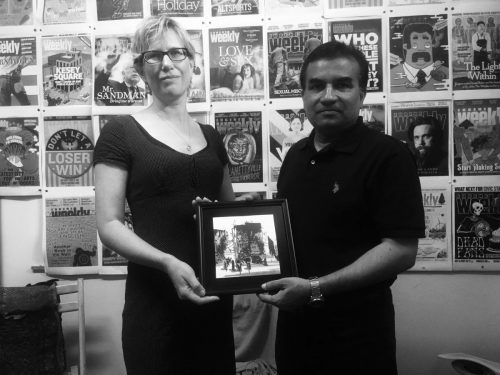
Mahmud Hafiz travelogue writer and a senior journalist from Bangladesh dropped by EW’s offices recently to talk journalism and the Bangla, aka Bengali, language. Hafiz, a contributing editor to the news portal Bangla News 24 came to Eugene for his son’s graduation from the University of Oregon. He will be writing a travelogue about his experiences.
Hafiz says Bangla News 24 and its editor-in-chief Alamgir Hossain pioneered online journalism in Bangladesh and the news site is updated from all over the country. The site is partially available in English.
In addition to discussing journalism, Hafiz came to speak to EWabout Bangla, a language he says, “for which people died.” According to Hafiz, UNESCO declared Feb. 21 as World Language Day “remembering our sacrifice.”
Hafiz explained that when India was divided into India and Pakistan, it was originally divided into East and West Pakistan, united by the Muslim religion but divided by the land mass of India itself. In West Pakistan (now Pakistan) Urdu was spoken but the language of East Pakistan was Bangla.
The Bengali Language Movement arose when the government of West Pakistan attempted to impose Urdu as the state language. On February 21, 1952, five students and political activists were killed during protests near the campus of the University of Dhaka. Hafiz said that each year on that date in Dhaka there is a procession of people wearing black shirts carrying wreaths to commemorate the sacrifice.
Bangla is the official language of what is now Bangladesh and according to Hafiz has more than 300 million speakers around the globe ranging from Bangladesh to India to New York City.
While in Eugene Hafiz presentedEW with an impressionistic painting of a street in Bangladesh. EW will post links to Hafiz’s travelogues when they are available in English.
Journalist Mahmud Hafiz presents EW Editor Camilla Mortensen with a painting from Bangladesh